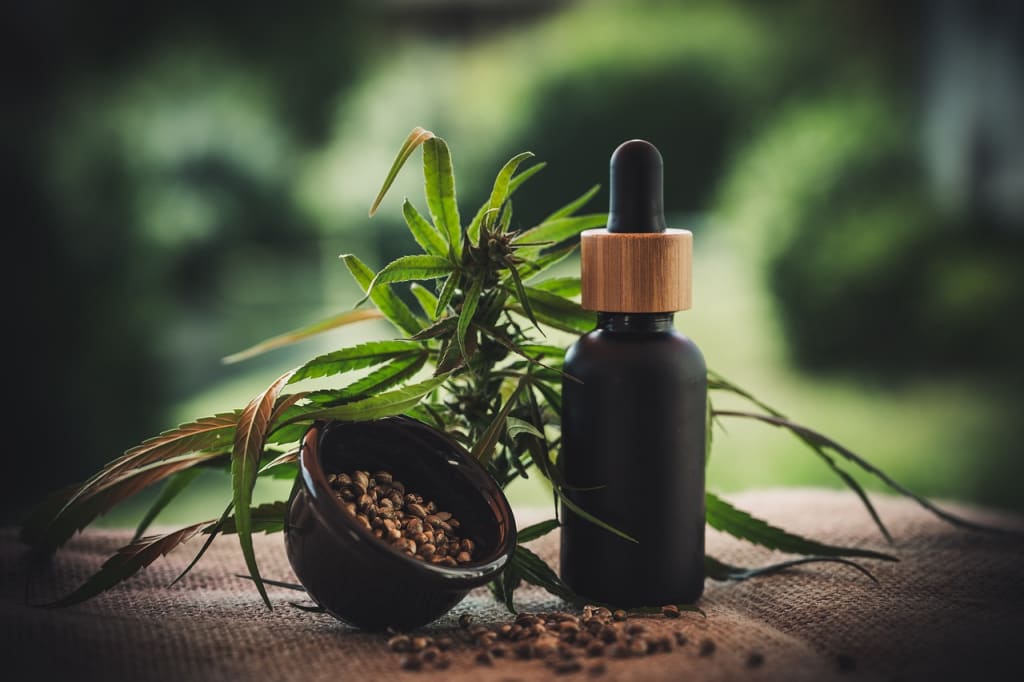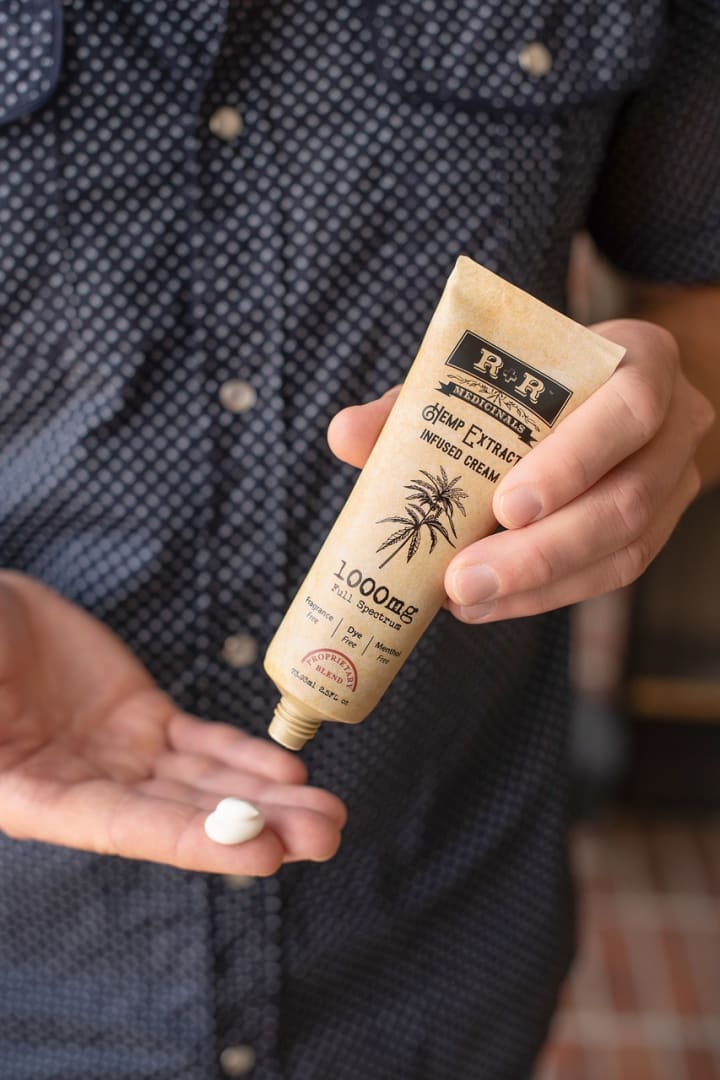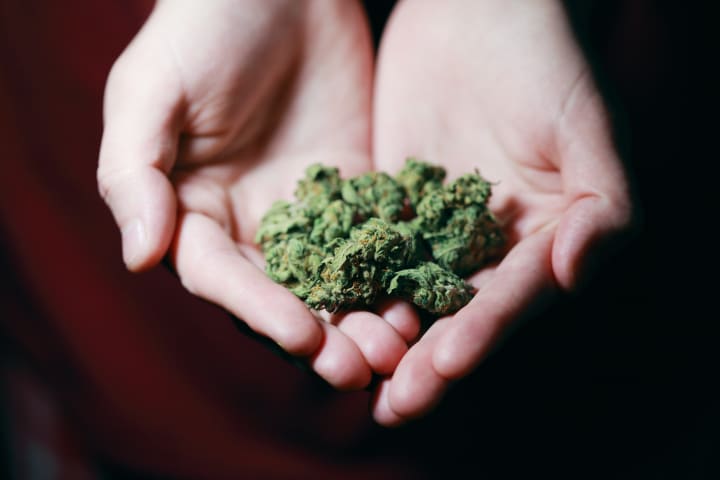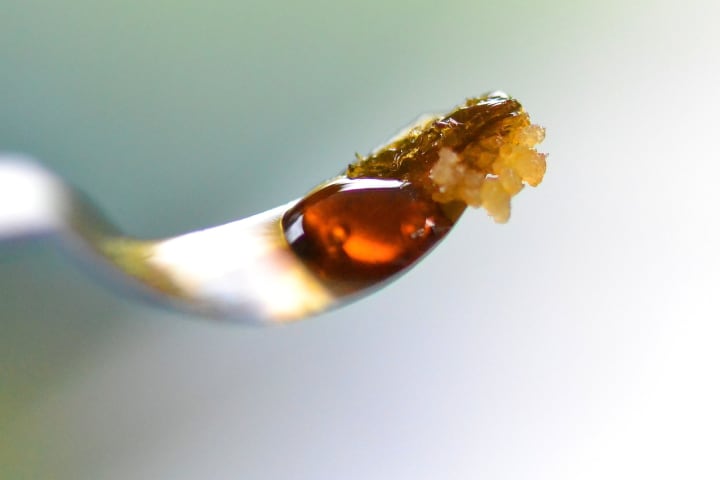A Guide to Medical Cannabis for Pain Management
How it works and how it can help you

The human race has used cannabis as medicine for over 5,000 years. The first recorded use of medical cannabis dates back to Emperor Shen Nung of Imperial China, who first used it as an anesthetic.
Pain relief stands out as one of the most common and effective uses for cannabis. There are numerous ways to use the plant to treat pain, be it chronic back pain or even something as simple as a bug bite. The endocannabinoid system affects the entire body in surprising ways.
What is the Endocannabinoid System?
The endocannabinoid system is a network of receptors in cells throughout the human brain and body. There are two main types of cannabinoid receptors. The CB1 Receptor, which is mainly found in the brain, and the CB2 receptor, which is found in the rest of the body. These receptors are found throughout the body to regulate essential functions.
Our body creates its own endogenous cannabinoids to interact with these receptors and regulate the body. The first is anandamide, also known as the “bliss molecule.” The second is 2-archidonoyl glyerol, also known as 2-AG. There are likely other endocannabinoids as well, but more research is needed.
The ECS plays a key role in homeostasis. When one of our body’s functions falls out of balance such as body temperature, mood, or sleep the body produces endocannabinoids to correct the issue. Enzymes are then produced to break down the cannabinoids and avoid overcorrection. Cannabis supplements this process by adding cannabinoids when a system may be dysregulated such as sleep or mood.
ECS and Pain
So how does this relate to pain? As stated earlier, our entire bodies are covered in these receptors, including the brain, spine, muscles, immune system, and others. Cannabis interacts with these receptors all over the body by acting as an anti-inflammatory and reducing pain throughout the entire body. CB1 receptors are most abundant in the brain and along the spine, while CB2 receptors are more prevalent in the rest of the body.
THC mainly acts on the CB1 receptor which is responsible for the “high” that cannabis produces. CBD and other cannabinoids mainly act on the CB2 receptor. Both receptors are abundant in the body. As a result, cannabis varieties with both THC and CBD are often the most effective for pain.
Cannabis is a plant with a very complex chemistry. Cannabis Sativa is made up of thousands of compounds, many of which have therapeutic value. It is the very complexity that makes the plant so helpful. It’s not any single compound in cannabis that causes its effects, but a culmination of everything in the plant.
The Entourage Effect
It is not just THC and CBD that matters. Everything does. The entourage effect is the theory that various cannabinoids, terpenes, flavonoids, flavorants, and other compounds work synergistically to create the unique variety of effects and benefits that cannabis offers. Every time we consume cannabis our body takes in hundreds of botanical compounds.
These cannabinoids and other compounds work together and are often more beneficial when combined. The most abundant cannabinoids in cannabis include THC, THCV, CBD, CBDV, CBC, CBG, and CBN. Cannabinoids dictate how psychoactive the experience is, which receptors are being stimulated, and specific therapeutic effects.
Terpenes are a group of organic compounds found in most plants. This includes the Cannabis Sativa plant. Terpenes are a large part of what gives cannabis its unique smell and taste. They are also what contribute to the wide array of effects and feelings that cannabis users experience when they consume. Myrcene, for example, tends to promote sleep and sedation in most people. Inversely, terpinolene tends to be stimulating and invokes alertness and focus.
The entourage effect means that everything matters. Numerous compounds in cannabis hold therapeutic value. A combination of cannabinoids, terpenes, and other compounds is usually the most effective from a therapeutic standpoint. Isolates, meaning products with only one active compound, tend to not have as much benefit as full-spectrum products such as extracts, full-extract cannabis oil, and flower. For example, in a study done this year by PAX and Zentrela, full-spectrum rosin had a greater psychoactive effect compared to THC distillate. (Sharma., 2023)
How Do I Use Cannabis to Help Treat My Pain?
Cannabis is one of the most effective medicines to help treat pain while also representing low risk to the individual. Understanding what kind of pain you are experiencing is crucial to helping in using cannabis to treat it.
Acute Pain
Acute pain is short in duration, usually lasting a few minutes to a couple of days. It is usually related to some kind of injury or short-term illness or condition. Acute pain can turn into chronic pain if the root cause is never addressed, but it usually subsides as the condition is addressed.
While acute pain is short-lived, it does not mean cannabis cannot help. If the pain is very localized, a cannabis topical can work wonders. If you can find a topical that contains THC as well as CBD or CBG that would be preferred. The skin has CB1 and CB2 receptors and benefits from full-spectrum topicals.
If the pain is not as localized I would recommend inhalation as the method of delivery. Inhalation has a fast onset time that makes it well-suited for acute pain.
Chronic and Neuropathic Pain
Chronic Pain is longer in duration and is usually related to a serious injury or a chronic illness. Pain does not have to be constantly present for it to be considered chronic pain. Many nerve conditions have “flare-ups” where pain is worse some days than others. Fibromyalgia is an example of this.
Chronic pain is a long road, but cannabis can help. It is important to choose a method of delivery that is comfortable for the patient and works in the long run. This is crucial to maintain consistency for pain management. For many patients with chronic pain, the pain is full body. Edibles and other ingestible forms are what I usually recommend for this. The reason is that edibles offer a full-body effect that can help anywhere that pain is present. Edibles have a longer duration and can last anywhere from 4–8 hours. This is ideal for long-term use, especially when treating pain during the day.
It is worth noting that a small fraction of individuals do not process edibles as well for a variety of reasons. Inhalation is the next best option. If inhalation is your method of choice, consider using a product with a mix of THC, CBD, or other cannabinoids like CBG if you can find them. The best cannabis for pain relief is strains dominant in beta-caryophyllene, myrcene, and linalool. This all relates to the entourage effect discussed earlier.
If pain is at all localized, I always recommend supplementing with a topical as well. This also works well for neuropathic pain, especially on extremities such as hands and feet. Many individuals find a combination of ingestible, inhalation, and topical products that work for them.
Pain Management Best Practices
The goal of pain management is not necessarily to eliminate pain entirely. This is often unrealistic for many people with chronic conditions. The goal is to reduce pain as much as possible and improve quality of life.
Not all pain is the same, and not all products are the same. Each type of product does something a little bit different, and individual results may vary. I have seen that usually a combination of edibles, inhalation, and topical is the most effective.
As a general rule, choose products that have passed quality and safety checks. What I mean by this is choosing products that have lab testing available. These are normally products in dispensaries, but there are reputable hemp, CBD, and other cannabinoid brands online. If you are buying products online, ensure they come with a certificate of analysis. This should test for cannabinoids as well as contaminants, pesticides, heavy metals, and other toxins.
Which Products Should I Choose?
The products that you choose to consume are going to depend on your pain level, experience level with cannabis, and the type of pain you are addressing.
Topical

Topicals are a lotion, balm, cream, or patch that you apply directly to the affected area. Topicals marked as “transdermal” lotions are always preferred for pain. Transdermal lotions and patches get past the epidermis layer of skin and into the bloodstream. A transdermal patch would deliver THC and other cannabinoids to the affected area over time .This helps with treating pain in the area as well as providing some systemic relief.
Topical lotions are more meant for surface-level applications. This would include bug bites or burns. Transdermal lotions and patches are better suited for pain.
Ingestion
I find ingestion to be the most effective method for long-term, sustainable pain relief. This is always preferred when pain is not localized or if it is neuropathic in origin. 1:1 THC to CBD can be a good option for pain relief while minimizing intoxication.
When it comes to products, the legal market offers many options. Full-spectrum products with varied chemical profiles will often be the best for relief. This includes RSO or full extract cannabis oil. This is a whole plant extract that is known for pain relief. It is often available in 1g syringes or predosed capsules.
Tinctures can also be a good option. RSO is sometimes available in tincture form as well. The advantage of tinctures is that you can absorb the product sublingually by letting it sit under your tongue. This has a fast onset time and will begin to take effect in a few minutes. Standard edibles normally take effect within 45 minutes to an hour. Choose a tincture that has a varied cannabinoid profile for best effects.
Edibles, gummies, and other infused products can be another alternative.

These products tend to offer more of an infused food experience, but can still offer therapeutic benefits. My recommendation would be to look for an infused product made with a full-spectrum base product such as rosin or resin rather than THC/CBD distillate.
Inhalation
Inhalation has the fastest onset time of any form of cannabis. It can be helpful for severe chronic pain, acute pain, or for managing symptoms while waiting for other forms like edibles to take effect. There are many products to choose from, but choosing full-spectrum products with a varied chemical profile is still a good rule of thumb.
Flower is cannabis in its original form.

It is also called weed, marijuana, Mary Jane, and pot. It is what everyone thinks of when someone talks about cannabis. Flower is natural and consequently has the diverse chemical profile that is needed. The benefit of flower is there is nothing removed, separated, or added. It normally has a cannabinoid content of 15%-30%.
Vaporizing cannabis flower using a device like the volcano vaporizer is the best option from an overall health and benefits point of view. You get all of the effects you want without any carbon or other toxins associated with smoking. This being said, not everyone has access to a device like the volcano. It is a high barrier to entry as most high-quality vaporizers available today are expensive.
Smoking is still a safe and effective method of pain relief available. Smoke has a unique chemical composition compared to vapor and it will work better for some individuals than vaping. Every individual has different needs and health concerns, but I generally recommend using the method that works best for you. If smoking cannabis addresses your pain and improves your quality of life, then it is working as intended. Cannabis is also safer and just as effective as many standard options for addressing pain such as opioids.
Concentrates and cartridges are the other main product types available for inhalation.

Concentrates are any extraction of cannabis meant for inhalation. Cartridges are electronic vaporizers filled with a measured amount of cannabis concentrate. Concentrates are much more potent with THC normally ranging from 60% to 90%. I generally don’t recommend concentrates unless flower is not helping with pain. The reason for this is that concentrates tend to increase tolerance to THC, which can increase your overall amount spent at the dispensary as well as potentially lowering efficacy in the long run. However, if the pain is severe, or if flower is not effective, concentrates are a good option. Concentrates also smell a lot less than flower so discretion may come into play for some.
When it comes to treating pain with concentrates, you are looking for something as close to the original plant’s full profile as possible. This means choosing products that have preserved as much of the original plant’s essence as possible. Distillation removes many potentially therapeutic compounds in the plant. I recommend using solventless rosin or live resin products because many of these compounds have been preserved where distillate would separate them or destroy them. These products are normally available in both cartridge and concentrate form.
Rosin is a concentrate that is pressed directly from the trichomes of the plant without using any solvents. This preserves cannabinoids and terpenes while also preventing the degradation of other crucial compounds.
Live Resin is a concentrate extracted from fresh-frozen cannabis flowers. The cannabis is harvested and then frozen within 24 hours at the peak of freshness. This also preserves cannabinoids and terpenes that would potentially be lost during the dry and cure process. Live resin produces a product that is rich in cannabinoids and terpenes.
The best cannabinoid and terpene combination for pain relief through inhalation varies from person to person. There are a few terpenes that are well-known for promoting pain relief. The first and most important is beta-caryophyllene. This is a terpene that also acts as a cannabinoid by binding to the CB2 receptor similar to how CBD does. It is a powerful anti-inflammatory agent even without THC. In a study, CBD and b-caryophyllene reduced chronic pain without the addition of THC. They found this is true for CBD and b-caryophyllene both together and separately. (Eeswara.,2023) The other two terpenes promote muscle relaxation and pain relief and are linalool and myrcene.
There are also some strains that I have seen work consistently for pain. These strains vary, but most tend to be dominant in myrcene, caryophyllene, or pinene. Most strains will contain linalool in lesser amounts. Some of the best strains I have noticed are GG4, ACDC, Gelato, Sour Diesel, Harlequin, and Afghani. If you find a strain that works well for you, it can sometimes be helpful to look at strain genetics and seek out other related cultivars.
Disclaimer: I am not a doctor and this article is not intended as medical advice. Please seek guidance from a medical professional regarding medical conditions. This article is what I know from working years in the cannabis industry as well as research currently available. The legality of cannabis where you live may vary. Please check local laws.
Conclusion
Pain is different for everyone, as is true for treating it. Cannabis is one of the most effective tools we have for treating pain, It works differently for everyone but will continue to improve the quality of life of many.
If you liked this story, please give it some claps for me I appreciate it. If you have any comments or questions, I would love to hear them in the comments. Thanks for reading!
About the Creator
Adam Phillips
I am a cannabis industry professional currently working in a medical dispensary. My passion is to educate people on how to use cannabis and other natural remedies to improve their quality of life.






Comments
There are no comments for this story
Be the first to respond and start the conversation.